Uncover the Root Causes of a Blown Fuse Box and Their Consequences
A fuse box can experience malfunctions due to numerous factors, such as overloaded circuits, short circuits, defective appliances, or the gradual degradation of ageing components. Specifically, older fuse boards, particularly those equipped with ceramic fuses, are especially prone to failure as they age. When a fuse blows, it serves as a critical warning signal that your electrical system has exceeded its safe operational thresholds, necessitating immediate investigation to avert more severe complications.
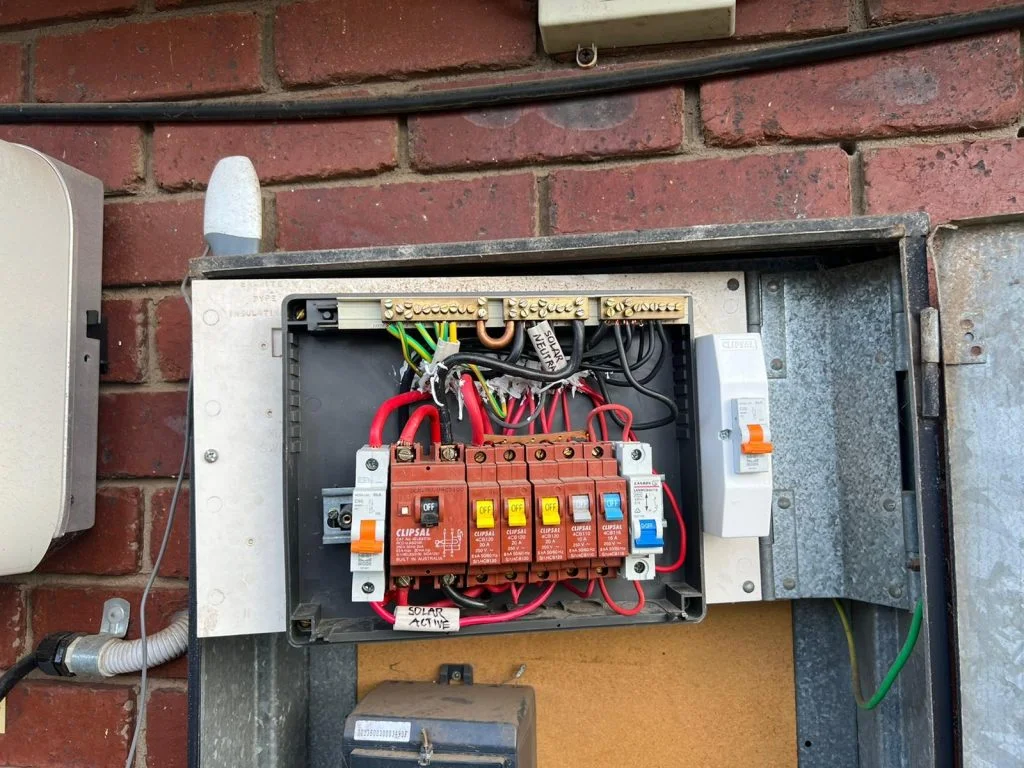
A Blown Fuse Box: A Critical Sign of Significant Electrical Issues Beyond Mere Power Interruptions!
Residents in Melbourne’s western suburbs often reach out to us when they encounter unexpected power outages. Whether these problems stem from burnt wiring, melted electrical tape, or recurring circuit tripping, understanding the underlying issues is crucial for ensuring safety. This article aims to provide a comprehensive exploration of the potential complications affecting your electrical system, alongside the most effective measures to take next to restore both safety and functionality to your home.
1. Spotting the Key Warning Signs of a Blown Fuse Box
While not every power outage directly indicates a faulty fuse box, there are particular symptoms to which you should remain vigilant. These warning signs include:
- Partial or complete power loss throughout your home
- Inability to reset one or more circuits after they have tripped
- Burning plastic odour near the fuse board, which may suggest potential overheating
- Visible black markings or melted plastic around the fuses, indicating damage
- Ceramic fuse wire that has snapped or completely disintegrated
If you’re uncertain regarding the condition of your fuse box, our Emergency Electricians are on standby, ready to inspect, repair, or safely replace any defective components to ensure that your electrical system functions efficiently and securely.
2. Exploring Common Causes of a Blown Fuse
Overloading Circuits with Multiple High-Power Appliances
Utilising an excessive number of high-draw appliances on a single circuit can easily surpass the fuse’s amp rating. For instance, operating your oven, kettle, and toaster simultaneously can create an overload situation. This excessive demand places undue strain on the fuse, increasing the likelihood of it blowing and potentially resulting in a fire hazard.
Short Circuits Due to Damaged Wiring
A short circuit can occur if there is compromised wiring or a malfunctioning appliance that diverts electrical current away from its intended path. This situation can lead to an immediate fuse blow or a circuit breaker trip, creating a dangerous scenario that requires urgent attention from a qualified electrician.
Component Degradation Linked to Age
Over time, older ceramic fuses may experience corrosion, loosening, or overall deterioration. With heat build-up caused by inefficient electrical flow, the fuse may eventually burn out, signalling an urgent need for replacement and possibly upgrades to modern standards for improved reliability.
Issues Arising from Incorrect Fuse Wire Installation
It is not unusual to find incorrect wire ratings in fuse installations—either too weak, resulting in frequent blowing, or too strong, posing significant dangers by failing to adequately protect the circuit. Ensuring the appropriate type of fuse wire is installed is essential for both safety and proper functionality.
-
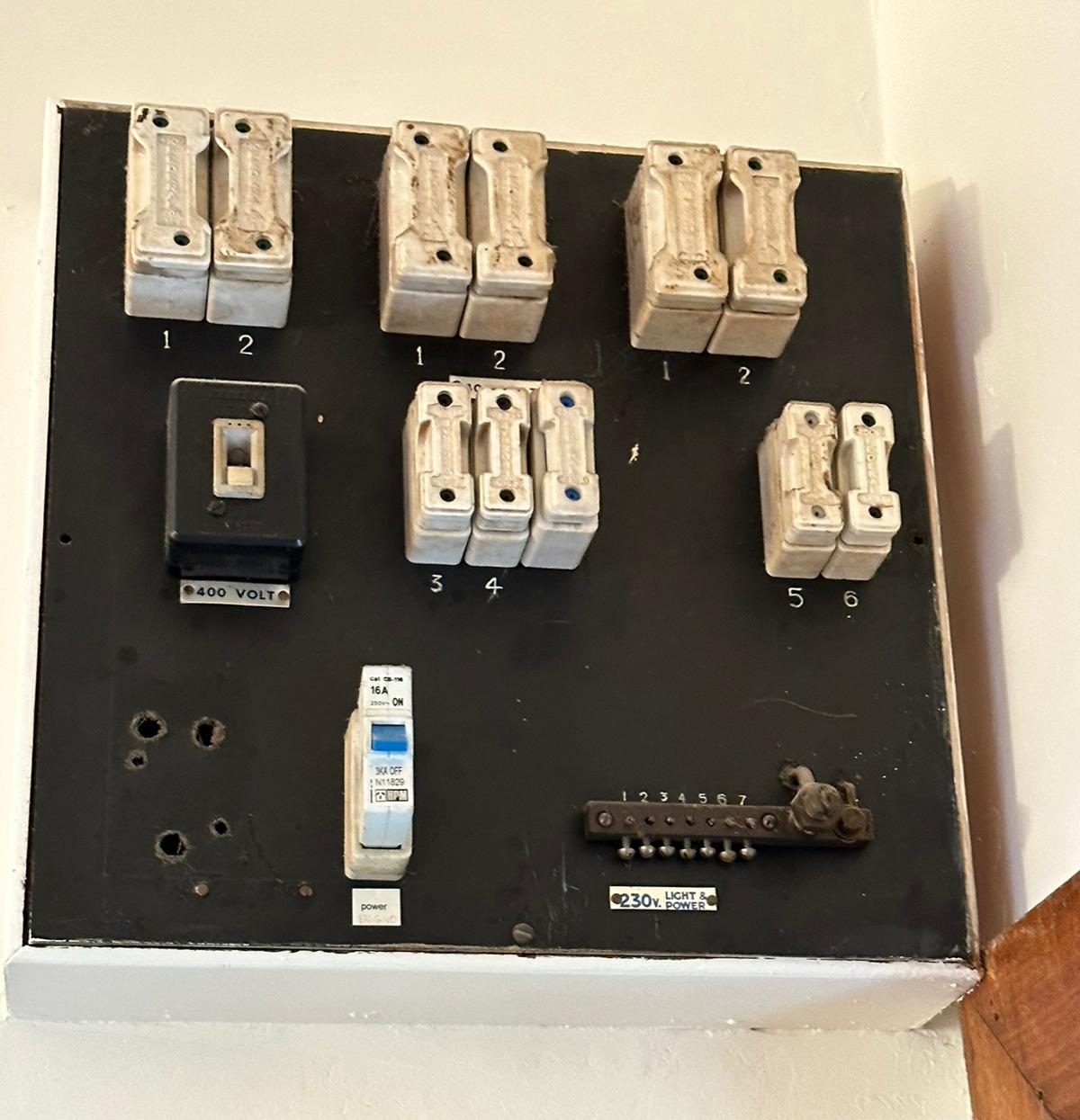 Old Ceramic Plugs
Old Ceramic Plugs -
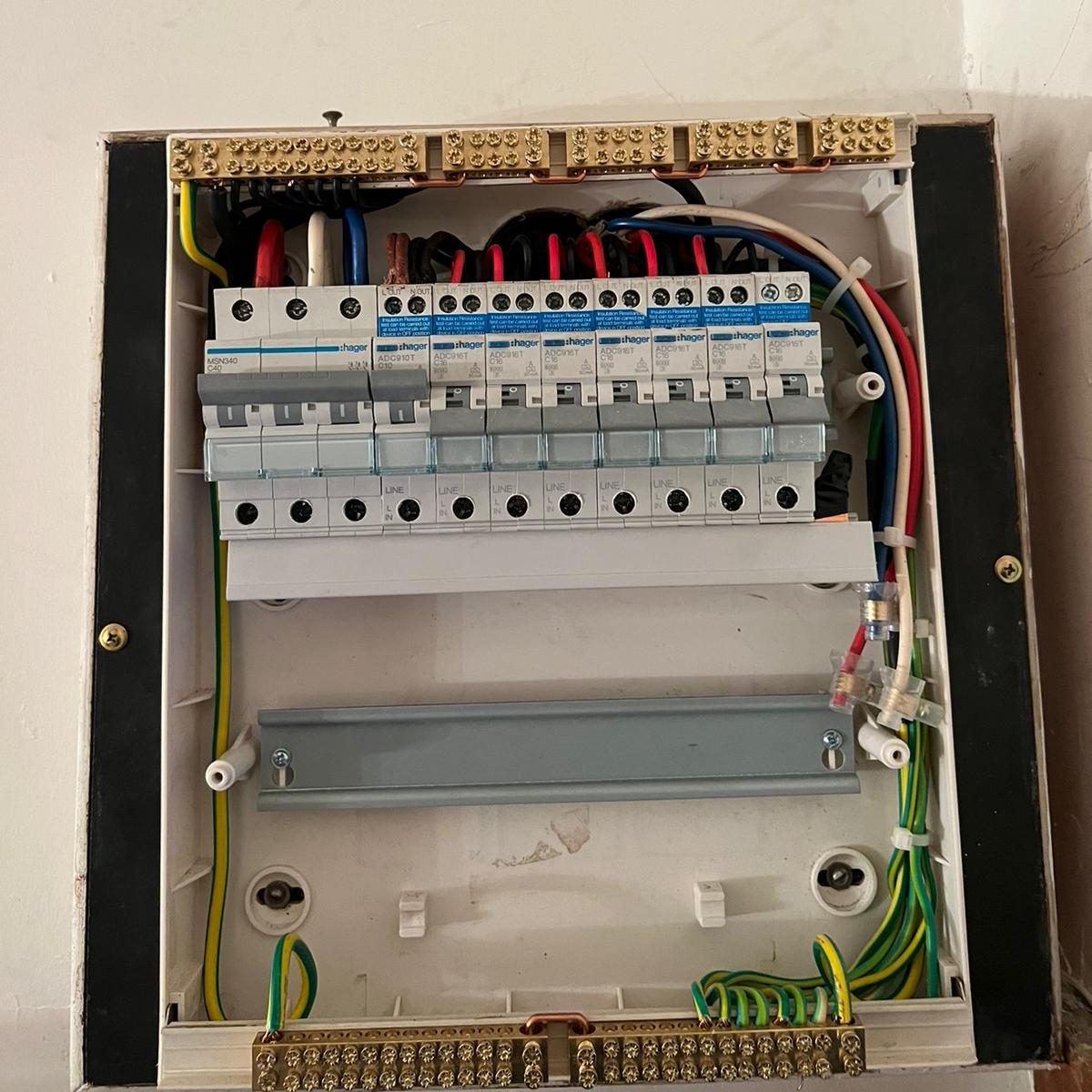 Now Upgraded
Now Upgraded
3. Comparing the Safety Features of Ceramic Fuses with Modern Circuit Breakers
If your home still relies on ceramic plug-in fuses, it is vital to consider upgrading your switchboard. Ceramic fuses are:
- Slower to trip in the event of a fault
- More vulnerable to unsafe bypassing by users
- Susceptible to user errors, such as improper fuse wire installations or faulty connections
- Provide no protection against electric shocks, putting users at risk
In contrast, modern switchboards incorporate circuit breakers and RCDs (Residual Current Devices). These contemporary devices automatically trip and can be reset quickly without requiring manual wire replacement. If your fuse box resembles an outdated model from the 1970s, it is certainly time for a Switchboard Upgrade to enhance both safety and reliability within your home.
4. Crucial Steps to Follow When Facing a Fuse Box Issue
If you are merely dealing with a tripped breaker, consider following these recommended steps:
- Unplug all appliances connected to that specific circuit to reduce the load
- Carefully attempt to reset the switch
- Gradually reconnect items one at a time
- If the breaker trips again, leave it off and contact us for prompt assistance
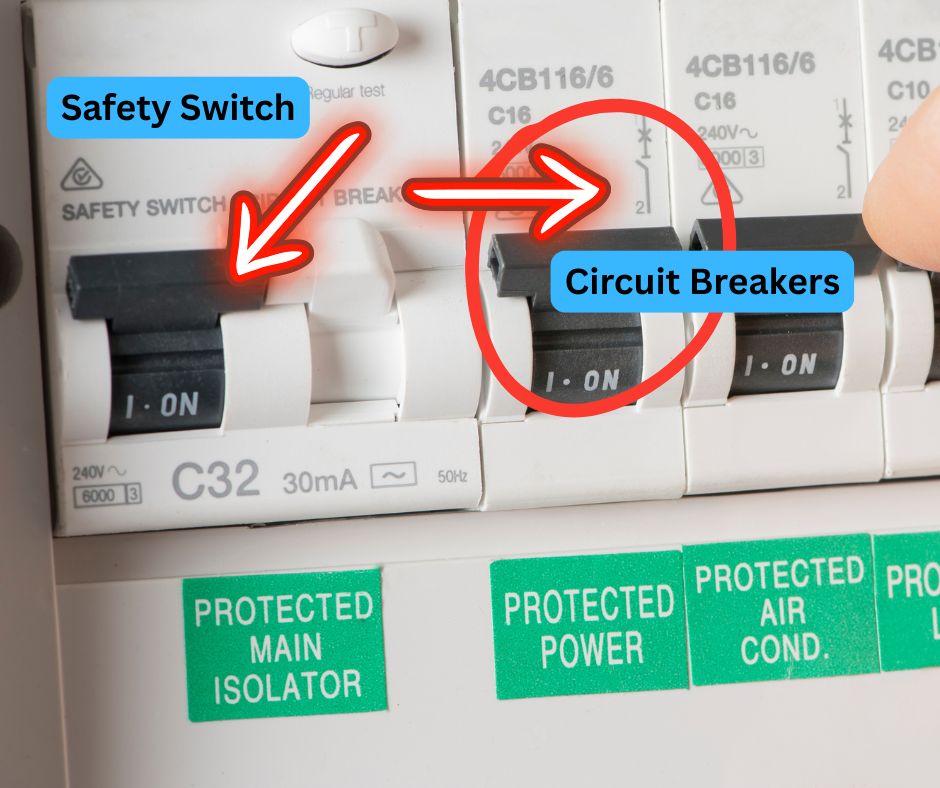
Guidelines for Addressing a Ceramic Fuse Problem
- Do NOT attempt to replace the fuse wire unless you are a licensed electrician, as this can be hazardous
- Avoid any DIY repairs, as they pose safety risks and may be illegal
- Switch off power at the main switch and contact Electrx for professional assistance
5. Our Thorough Approach to Repairing Blown Fuse Boxes
Our professional team will commence the process by isolating the fault and conducting thorough circuit tests using safe, industry-standard tools. Our systematic methodology encompasses:
- Identifying the precise cause behind the blown fuse
- Testing appliances to determine if they are contributing to the issue
- Replacing any burnt or damaged fuse carriers
- Upgrading to a circuit breaker or RCBO when appropriate
- Issuing a Certificate of Electrical Safety for all completed work to ensure compliance with regulations
If your fuse board is outdated, we will discuss options for modernising it, integrating RCD protection, and optimising circuit layouts for enhanced safety and efficiency.
When Should You Reach Out to a Qualified Electrician?
Experiencing a blown fuse once may simply be a stroke of bad luck. However, if this issue recurs or if your fuse box shows signs of significant ageing, it is crucial to take proactive measures. Contact Electrx to have your system thoroughly inspected, identify any faults, and ensure the issue is resolved effectively during the first visit. We are committed to maintaining your power supply and ensuring your home remains safe.
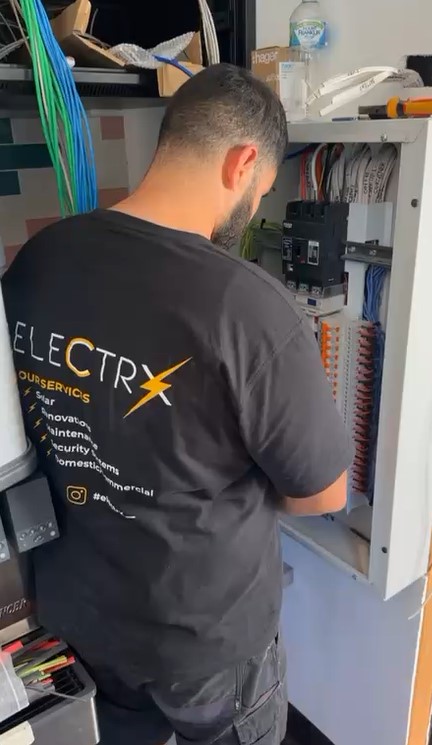
Request Your Free Quote Now!
Discover Our Free Electrical Inspections

Frequently Asked Questions About Blown Fuse Boxes and Their Related Issues
Can I replace a fuse wire on my own?
NO. In Victoria, replacing or rewiring ceramic fuses is considered electrical work and must be performed by a licensed electrician to ensure safety and compliance with regulations.
Is a blown fuse dangerous?
Indeed, it can be particularly hazardous if the cause is a short circuit or overload. If left unaddressed, these problems can escalate into serious fire hazards or electric shock risks.
What is the average cost to repair a blown fuse box?
Basic repairs generally start from a few hundred pounds. If a complete upgrade is necessary, we will provide you with a transparent, fixed quote before commencing any work.
Do you offer after-hours emergency services?
Yes, we provide 24/7 emergency services to address blown fuses and restore your power safely and efficiently.
Get Your Free Quote Today!
Inquire About Our Complimentary Electrical Inspections

The Article: Blown Fuse Box: Essential Tips and Next Steps first appeared on https://writebuff.com
The Article Blown Fuse Box: Key Tips and Actions to Take Next Was Found On https://limitsofstrategy.com
The Article Blown Fuse Box: Essential Steps and Advice to Follow found first on https://electroquench.com

